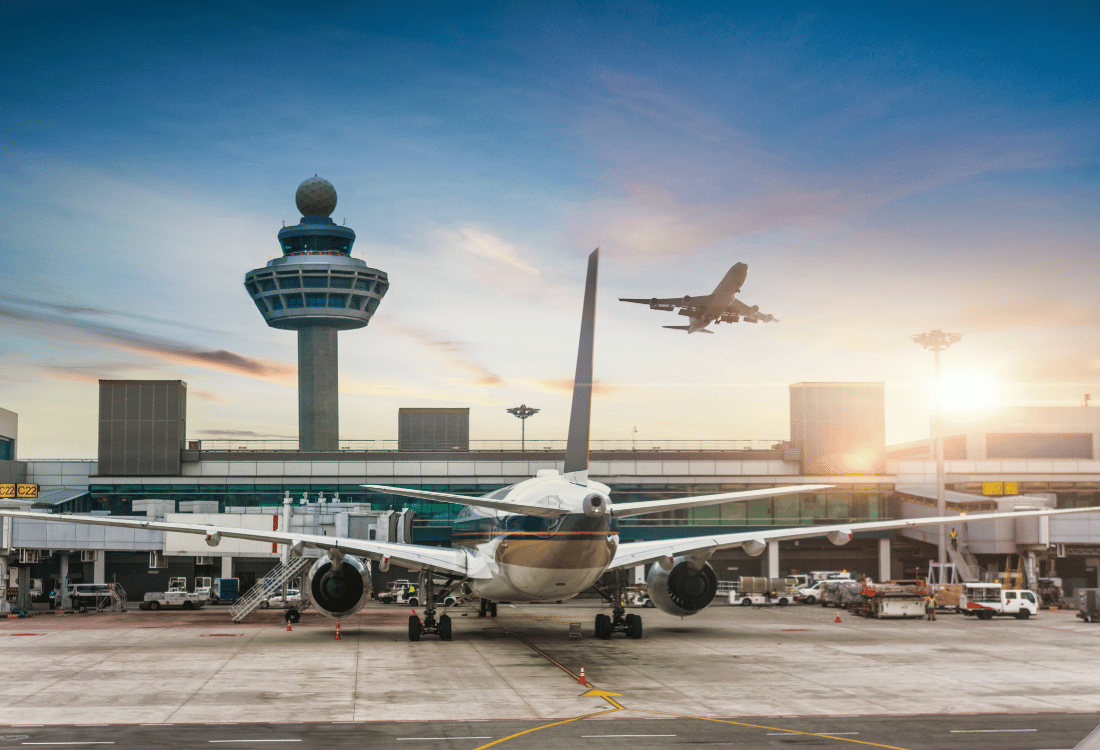Radio direction finding systems (RDFS) are advanced navigational tools used by air traffic controllers to identify the direction of a radio signal source – e.g. coming from an aircraft. RDFS systems employ ground mounted antennae and receivers to capture radio waves and pinpoint the precise bearing of the signal’s origin. First developed for military and maritime navigation and widely used in search and rescue operations to increase situational awareness, RDFS systems are now also used in commercial aviation settings.
In this article, we’ll look at the benefits of radio direction finding for your airport.
1. Advanced Digital Algorithms
By combining the Doppler Principle (or the ‘Doppler Effect’ – the way that radio waves change frequency or wavelength as the observer and signal source change position and distance relative to each other) with advanced digital algorithms, a radio finding system helps ATC operators to determine the relative direction – in degrees – of radio transmissions. These systems can operate at both UHF and VHF frequencies for fixed antenna applications and allow air traffic controllers to track aircraft in real-time with accurate information about the aircraft’s location, direction, and speed.
2. Precision Accuracy
Modern RDFS systems have pinpoint accuracy of better than 1°, easily enough to achieve ICAO Class A Bearing Accuracy. The precision provided by radio direction finding systems is unmatched by any equivalent technology. Using multiple antennae to triangulate the position of the plane, the result is precise location data that allows ATC staff to make informed decisions quickly based on objective data, eliminating the risk of error and improving safety in the sky and on the ground.
3. Modular Configuration
Modular configurations facilitate easy scalability to match the capacity requirements of your ATC operation. A modular RDFS is capable of monitoring up to 32 frequency channels on a single antenna, using up to 15 displays – giving you a system that can grow with your airport’s needs. More antennae can be integrated into the system to optimise your coverage if you need more capacity.
4. Advanced Displays
Modern RDFS systems come with advanced display interfaces that present location data in a concise and user-friendly format. When integrated with touchscreen controls, air traffic controllers can manipulate maps, charts, and other visual aids at the click of a button, accurately monitoring the movement of multiple aircraft in real time. ATC operators can quickly identify potential conflicts and delays, allowing them to take the required measures to guarantee safety and also share information in an accessible format with other aviation stakeholders.
Our advanced displays at Copperchase are capable of displaying up to 4 frequency channels concurrently, including GIS mapping and geo-referenced mapping, giving you a comprehensive view of your airport’s operation.
5. Multiple Radar Display Interfaces
Our radio finding systems can interface with multiple radar displays, such as the Cobham Radar Displays, the Thales Topsky (previously known as ‘Eurocat’), ATM System, and the Eurocontrol Asterix Part 31 (Category 205 specification). Your RDFS can work in tandem with other technologies such as your primary and secondary radars, ADS-B system, and surveillance cameras. This interoperability ensures seamless integration with your existing systems.
Find Out More
To find out more about our Copperchase radio direction finding system and how it can support your airfield operations, please contact us today by clicking here.
Image Source: Canva

